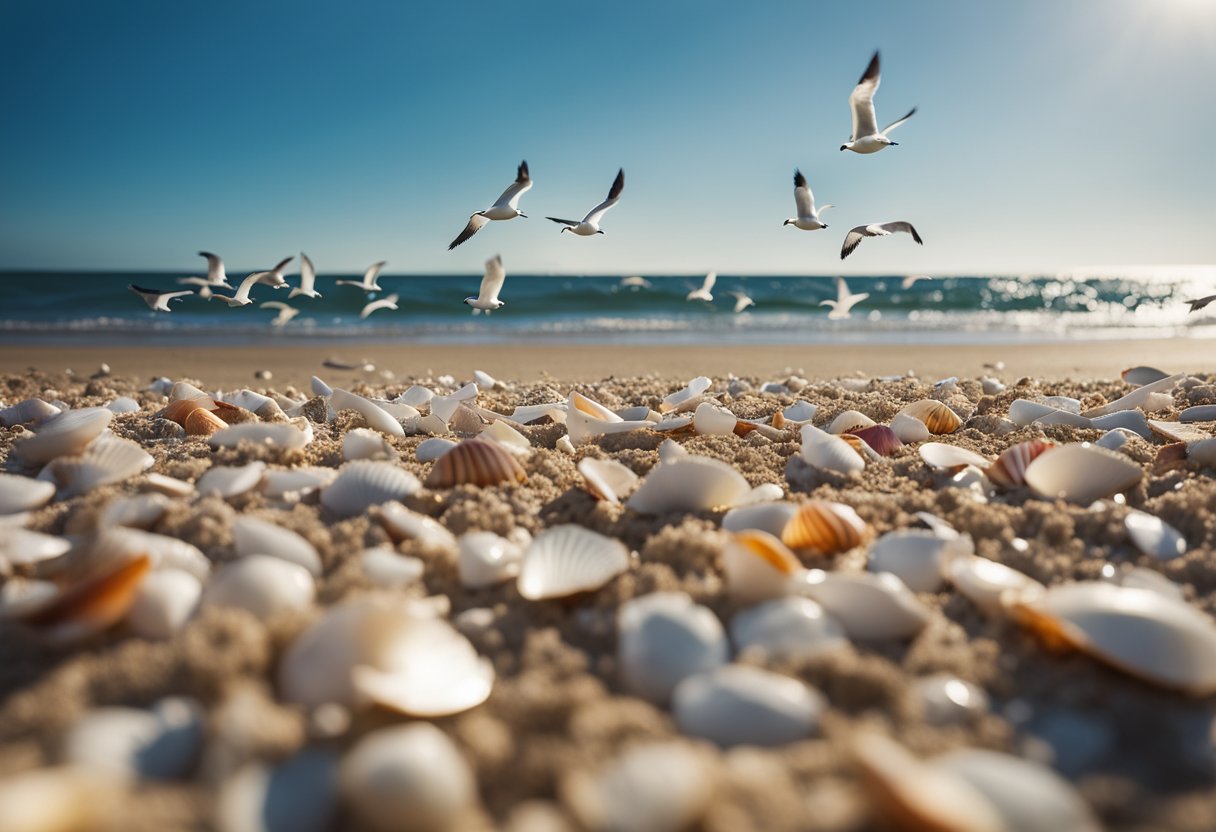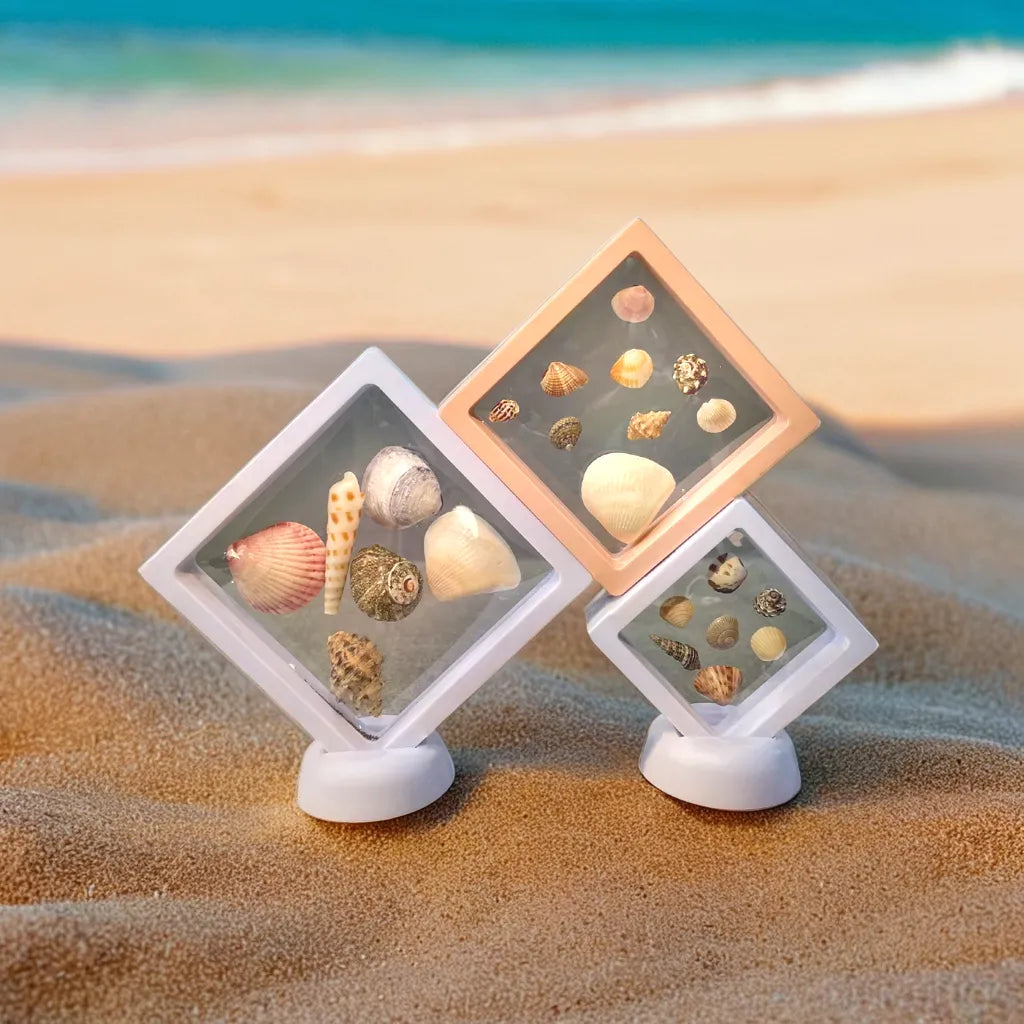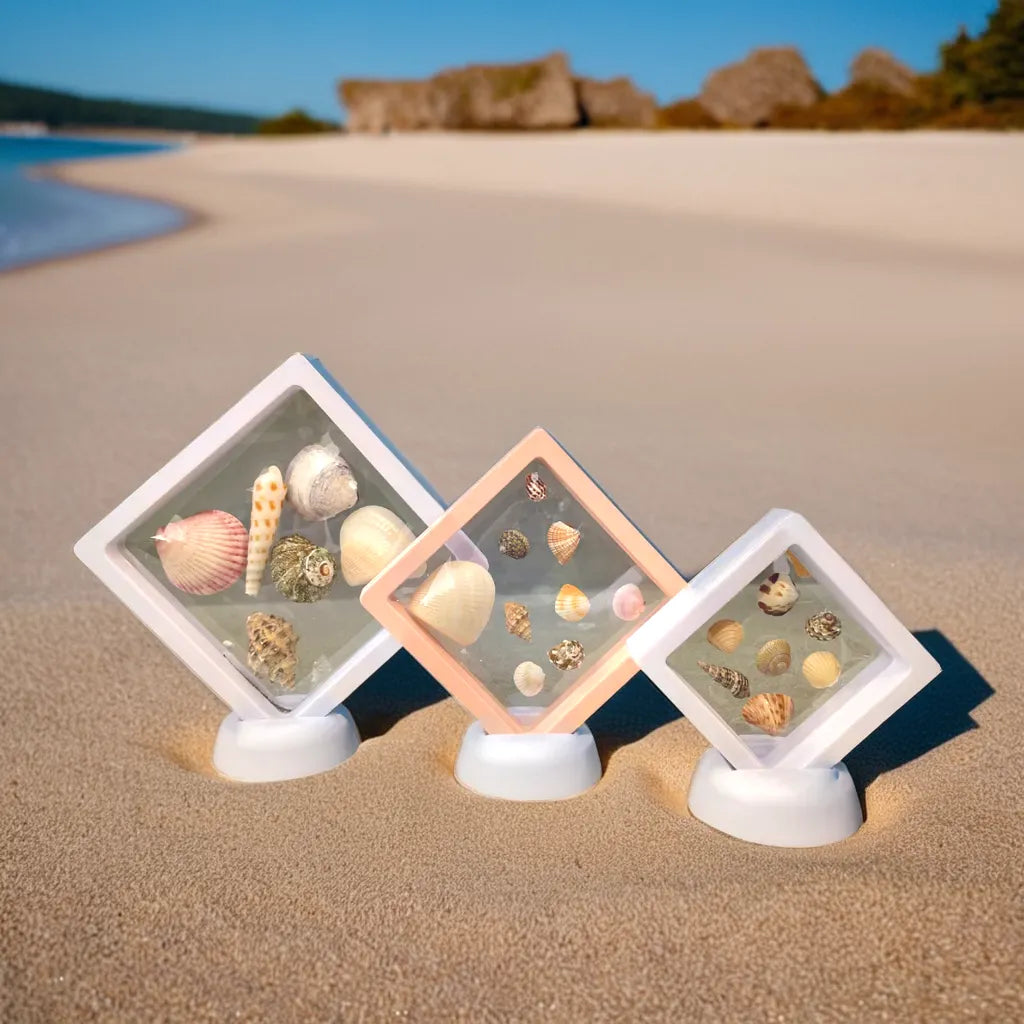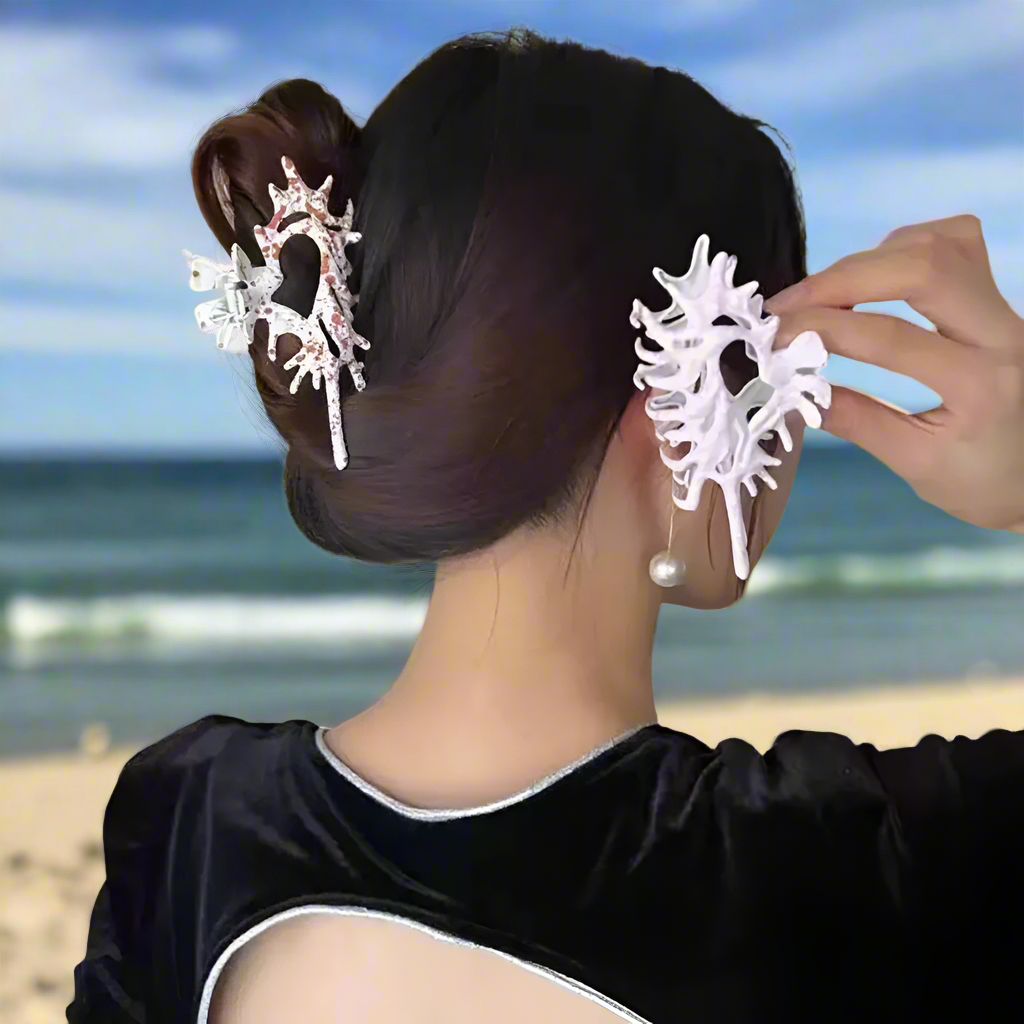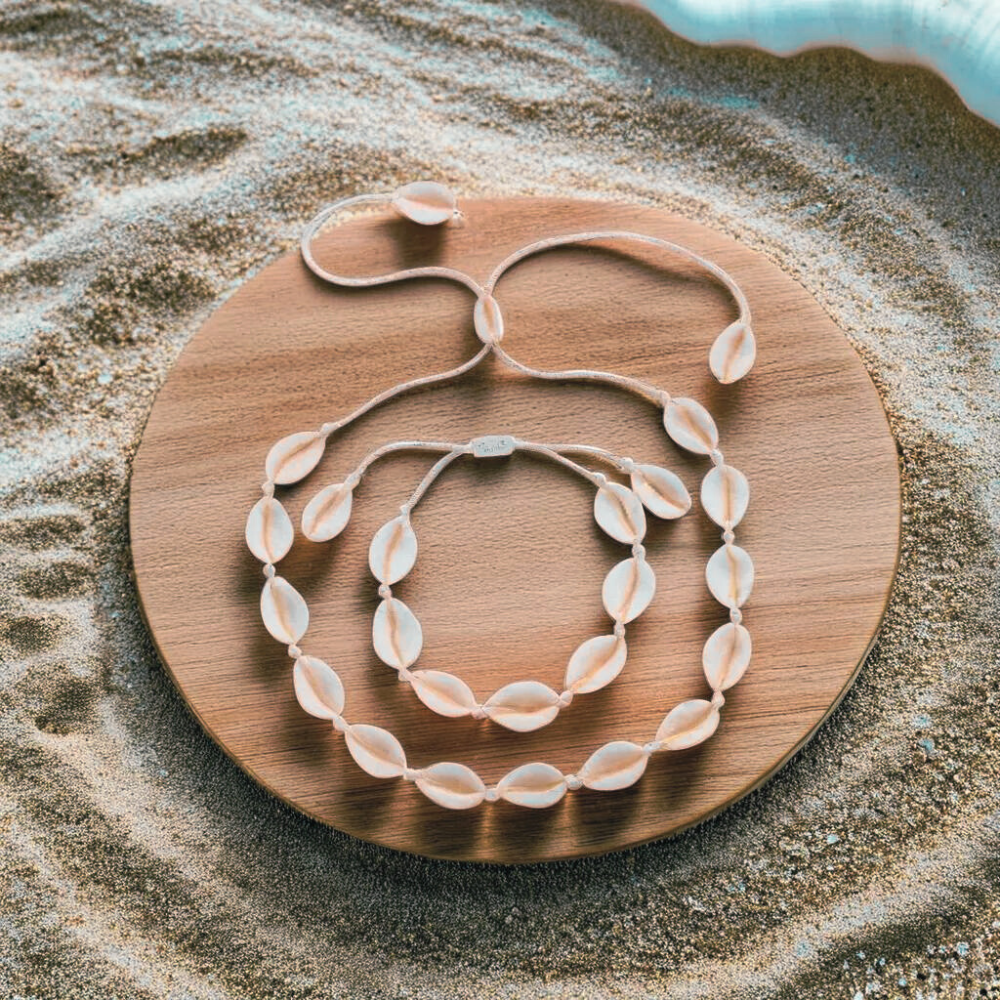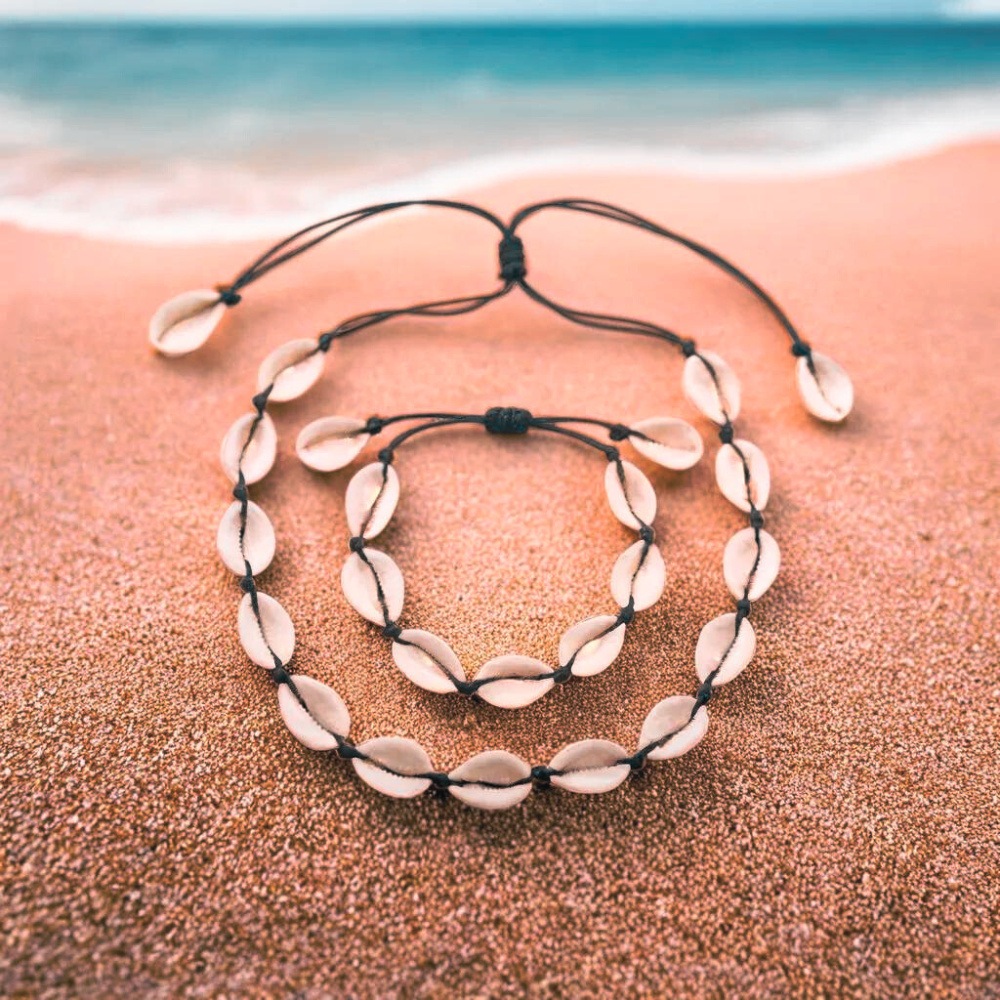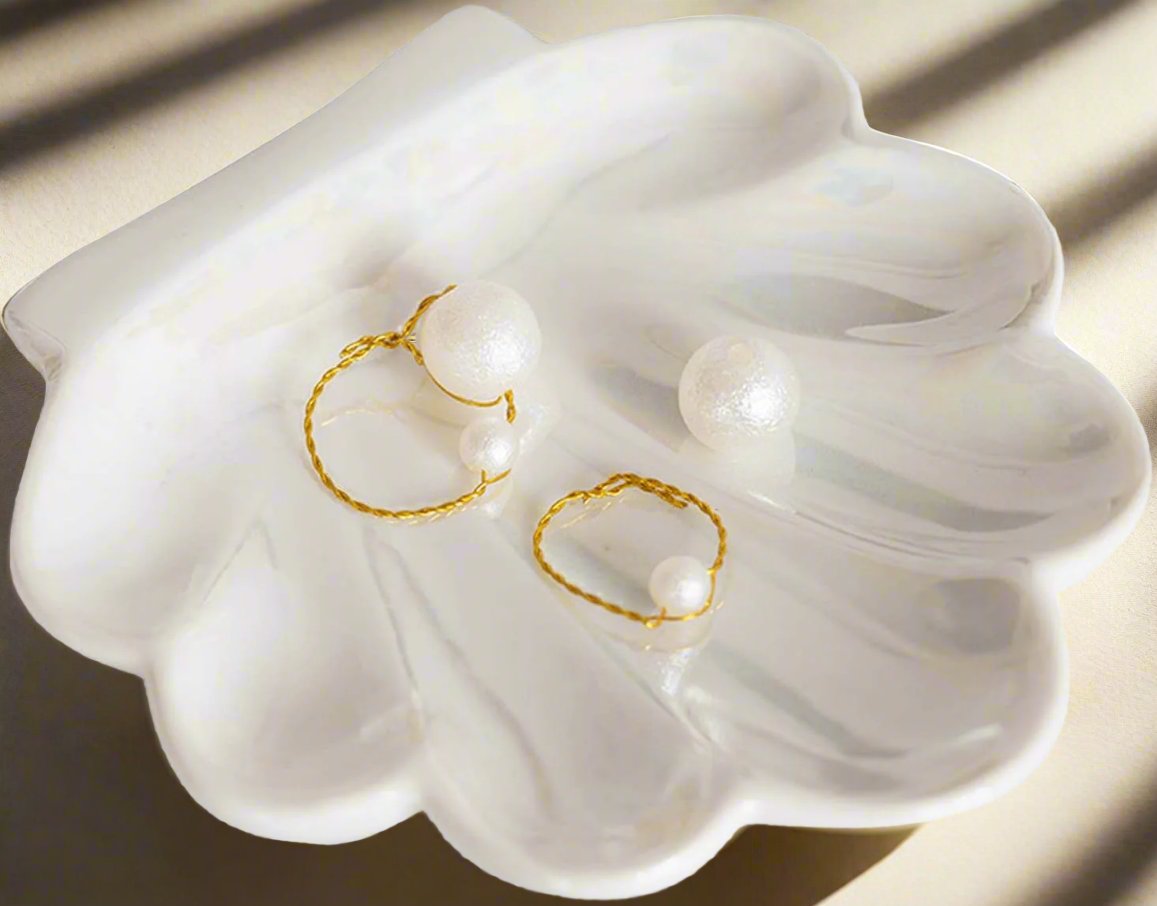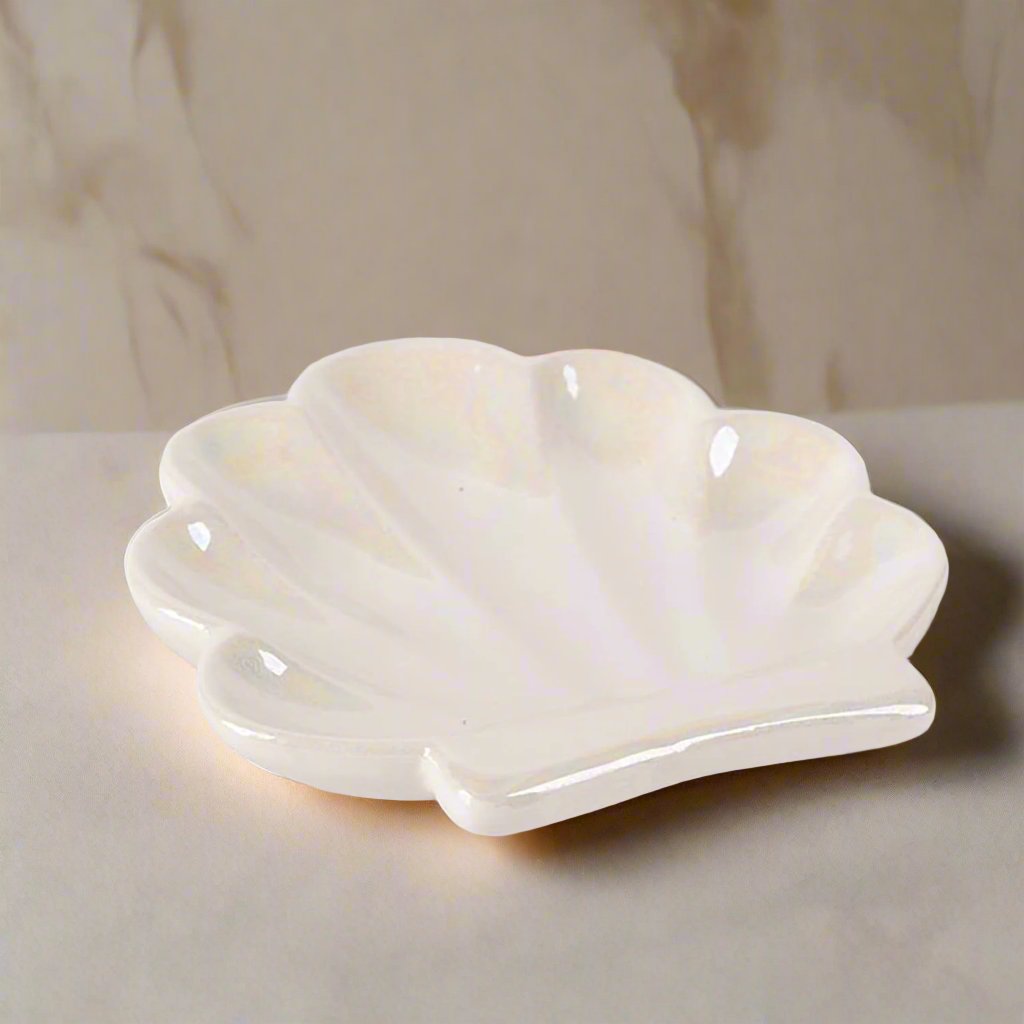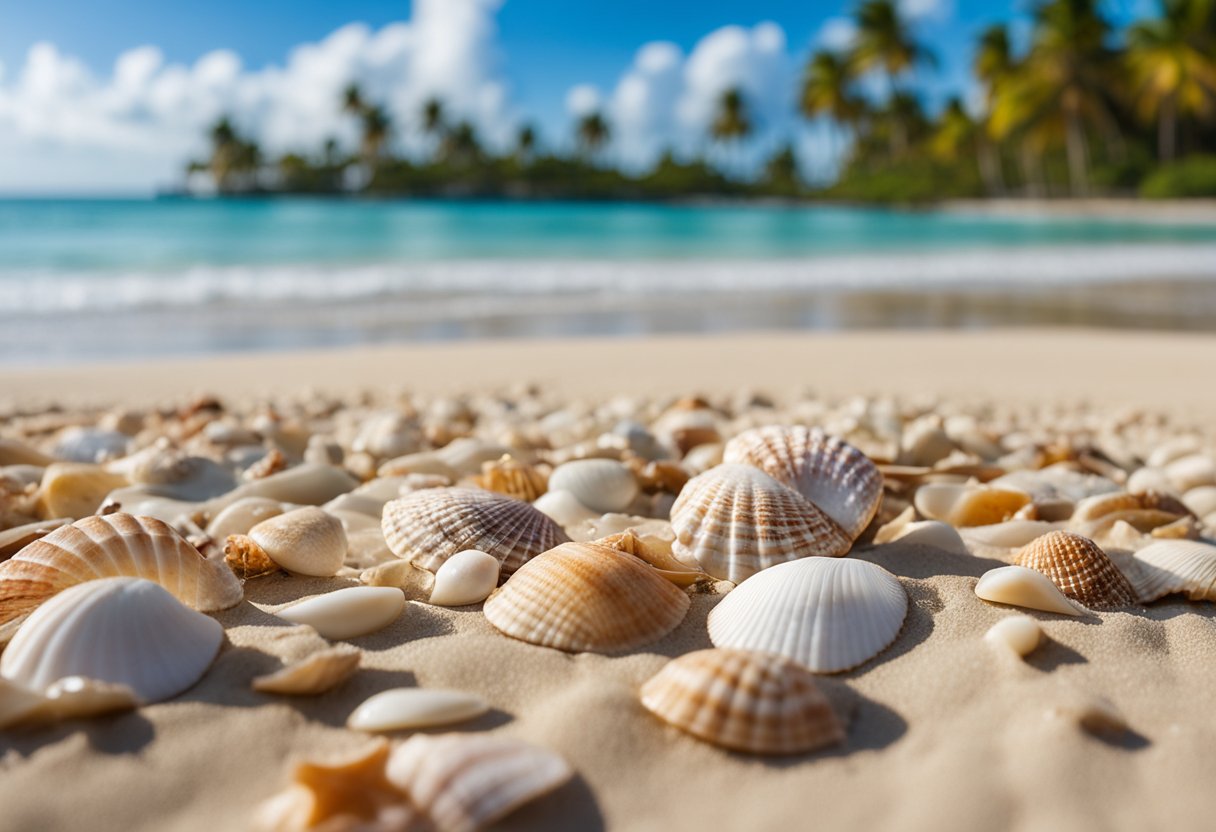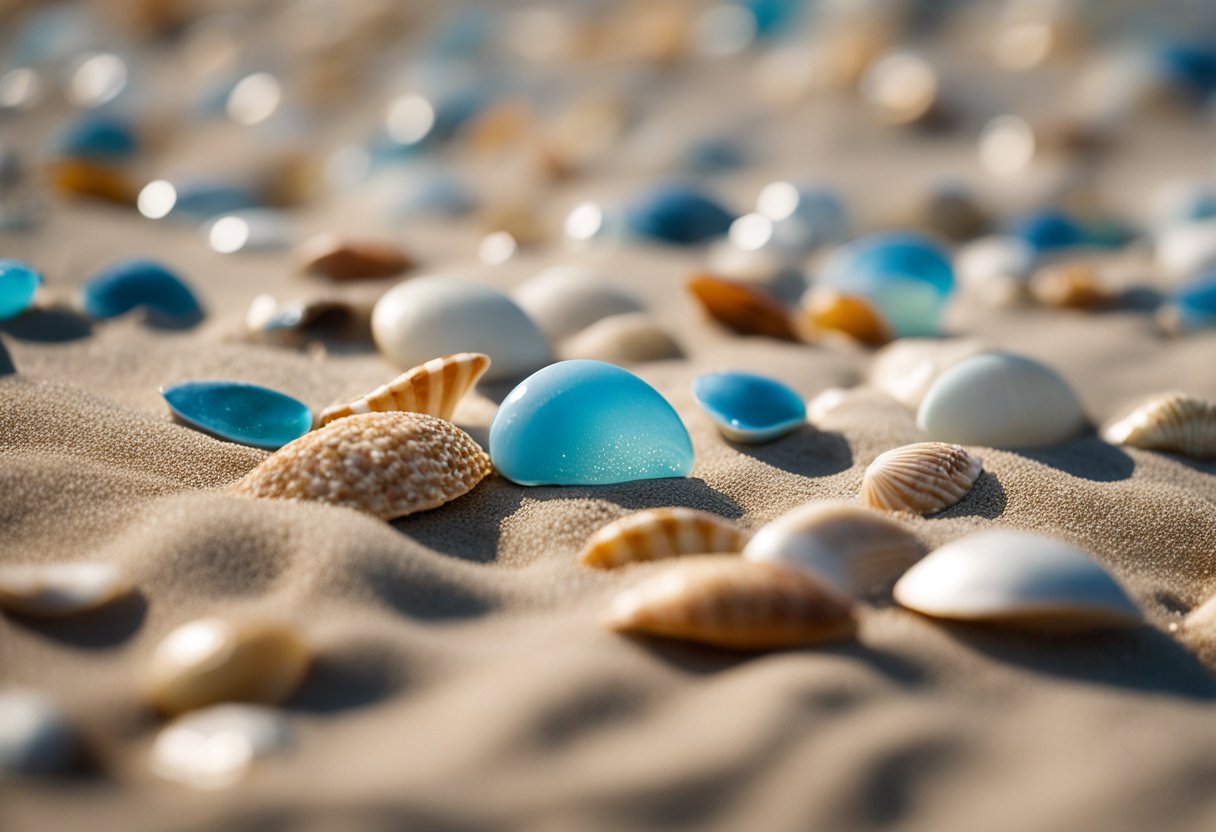For shelling enthusiasts, South Carolina offers some of the best beaches in the country. The coastline is dotted with hidden gems and popular spots where a variety of beautiful seashells can be found.
 Discover the perfect places to explore and collect seashells in South Carolina’s coastal waters. Whether you are an avid sheller or a casual beachgoer, these beaches provide the ideal environment to enjoy a day by the sea while uncovering nature's treasures.
Discover the perfect places to explore and collect seashells in South Carolina’s coastal waters. Whether you are an avid sheller or a casual beachgoer, these beaches provide the ideal environment to enjoy a day by the sea while uncovering nature's treasures.
 Isle of Palms offers some prime locations for shelling. Beach access at 42nd Avenue is a favorite spot, known for its abundant shells.
Many visitors enjoy the easy walk or golf cart ride to the shelling sites. The beach's sandy expanse provides plenty of room to search for treasures.
Exploring Isle of Palms for shells can be a rewarding experience for beachgoers.
Isle of Palms offers some prime locations for shelling. Beach access at 42nd Avenue is a favorite spot, known for its abundant shells.
Many visitors enjoy the easy walk or golf cart ride to the shelling sites. The beach's sandy expanse provides plenty of room to search for treasures.
Exploring Isle of Palms for shells can be a rewarding experience for beachgoers.
 Sullivan's Island offers a beautiful spot for shelling enthusiasts. The beach is known for its clean, sandy shoreline and a variety of shells scattered along the coast.
Visitors can enjoy the scenic drive from Charleston to reach this beach. The small downtown area nearby provides shops and restaurants, making it a convenient stop for a full day trip.
Sullivan's Island offers a beautiful spot for shelling enthusiasts. The beach is known for its clean, sandy shoreline and a variety of shells scattered along the coast.
Visitors can enjoy the scenic drive from Charleston to reach this beach. The small downtown area nearby provides shops and restaurants, making it a convenient stop for a full day trip.
 Seabrook Island is a great place for shelling in South Carolina. The island’s sandy shores are perfect for finding a variety of shells.
North Beach on Seabrook Island allows dogs, making it a fun spot for families with pets. Beaches here offer a peaceful atmosphere where shell seekers can explore and find unique treasures.
Beachcombers often discover colorful shells like conchs and whelks. Seabrook Island provides an enjoyable shelling experience with its beautiful and pet-friendly beaches.
Seabrook Island is a great place for shelling in South Carolina. The island’s sandy shores are perfect for finding a variety of shells.
North Beach on Seabrook Island allows dogs, making it a fun spot for families with pets. Beaches here offer a peaceful atmosphere where shell seekers can explore and find unique treasures.
Beachcombers often discover colorful shells like conchs and whelks. Seabrook Island provides an enjoyable shelling experience with its beautiful and pet-friendly beaches.
 Myrtle Beach is a popular spot for shelling enthusiasts. The best time to search for seashells is during low tide or early in the morning.
A big storm or a full moon can bring in even more shells. Pawleys Island, nearby, is also a good location for finding unique shells and shark teeth.
Myrtle Beach is a popular spot for shelling enthusiasts. The best time to search for seashells is during low tide or early in the morning.
A big storm or a full moon can bring in even more shells. Pawleys Island, nearby, is also a good location for finding unique shells and shark teeth.
 Hilton Head Island offers excellent beaches for shelling. Burkes Beach is known for its sandy paths and being pet-friendly, making it a great spot for shell collectors to explore. Nearby, Chaplin Community Park provides additional activities and amenities.
The diverse shoreline of Hilton Head Island allows visitors to find a variety of shells, especially during low tide.
Hilton Head Island offers excellent beaches for shelling. Burkes Beach is known for its sandy paths and being pet-friendly, making it a great spot for shell collectors to explore. Nearby, Chaplin Community Park provides additional activities and amenities.
The diverse shoreline of Hilton Head Island allows visitors to find a variety of shells, especially during low tide.
 Collected seashells can be used in various creative ways. They can be great souvenirs from your beach trips and add a touch of nature to your home decor.
Collected seashells can be used in various creative ways. They can be great souvenirs from your beach trips and add a touch of nature to your home decor.
 To maximize your shelling experience, knowing the best times to search and having the right gear is essential. Here's how you can make the most of your time on South Carolina's beaches.
To maximize your shelling experience, knowing the best times to search and having the right gear is essential. Here's how you can make the most of your time on South Carolina's beaches.
 South Carolina's coastline offers a rich and varied environment that is ideal for shelling. Its unique coastal ecology and the types of shells found here make it a top destination for beachcombers.
South Carolina's coastline offers a rich and varied environment that is ideal for shelling. Its unique coastal ecology and the types of shells found here make it a top destination for beachcombers.
 When shelling on South Carolina's beaches, it is essential to practice responsible behaviors and support local conservation efforts. These ensure that the natural beauty and ecosystem of these beaches are preserved for future generations.
When shelling on South Carolina's beaches, it is essential to practice responsible behaviors and support local conservation efforts. These ensure that the natural beauty and ecosystem of these beaches are preserved for future generations.
 Discover the best times, spots, and tips for shelling along South Carolina’s shores. Learn about identifying different seashells, where to find sea glass, and details about the state's official seashell.
Discover the best times, spots, and tips for shelling along South Carolina’s shores. Learn about identifying different seashells, where to find sea glass, and details about the state's official seashell.
 Discover the perfect places to explore and collect seashells in South Carolina’s coastal waters. Whether you are an avid sheller or a casual beachgoer, these beaches provide the ideal environment to enjoy a day by the sea while uncovering nature's treasures.
Discover the perfect places to explore and collect seashells in South Carolina’s coastal waters. Whether you are an avid sheller or a casual beachgoer, these beaches provide the ideal environment to enjoy a day by the sea while uncovering nature's treasures.
1) Hunting Island State Park
Hunting Island State Park is a favored destination for shelling enthusiasts. Located on Hunting Island, it offers plentiful opportunities to find unique seashells. The sandy shores attract millions of visitors each year. Low tide reveals an abundance of shells, making it a prime spot for collectors. The park also features nature trails and South Carolina's only lighthouse, adding to its appeal.2) Edisto Beach
Edisto Beach is a top spot for shelling in South Carolina. Visitors often explore the beach's sandy shoreline for various shells, especially during low tide when more shells are visible. Edisto Beach is known for its diverse and plentiful shell collection. Shell Island, accessible by boat, is a nearby option that offers even more shelling opportunities.3) Kiawah Island
Kiawah Island offers an exceptional shelling experience. The island's shore is filled with a variety of seashells, making it a prime spot for collectors. Guided tours, costing $65 for adults and $55 for children, provide visitors with expert knowledge and enhance the shelling adventure. The tour begins at Andell Bluff. With its beautiful and unique shells, Kiawah Island is a must-visit for shell seekers.4) Pawleys Island
Pawleys Island is a top destination for shelling in South Carolina. Its beautiful, undeveloped beaches offer a peaceful environment for collecting shells. Visitors can find jingle shells, lettered olives, and banded tulip shells along the shoreline. The nature center at nearby Huntington Beach State Park also provides insights into the marine life that inhabit these shells.5) Folly Beach
Folly Beach is a prime location for shelling enthusiasts in South Carolina. It's known for its large variety of seashells, including angel wings, whelks, slipper shells, and olive shells. The beach is easily accessible, only about ten miles south of Charleston. Visitors can enjoy both the beautiful white sandy shores and the rich shelling opportunities that Folly Beach offers.6) Isle of Palms
 Isle of Palms offers some prime locations for shelling. Beach access at 42nd Avenue is a favorite spot, known for its abundant shells.
Many visitors enjoy the easy walk or golf cart ride to the shelling sites. The beach's sandy expanse provides plenty of room to search for treasures.
Exploring Isle of Palms for shells can be a rewarding experience for beachgoers.
Isle of Palms offers some prime locations for shelling. Beach access at 42nd Avenue is a favorite spot, known for its abundant shells.
Many visitors enjoy the easy walk or golf cart ride to the shelling sites. The beach's sandy expanse provides plenty of room to search for treasures.
Exploring Isle of Palms for shells can be a rewarding experience for beachgoers.
7) Sullivan's Island
 Sullivan's Island offers a beautiful spot for shelling enthusiasts. The beach is known for its clean, sandy shoreline and a variety of shells scattered along the coast.
Visitors can enjoy the scenic drive from Charleston to reach this beach. The small downtown area nearby provides shops and restaurants, making it a convenient stop for a full day trip.
Sullivan's Island offers a beautiful spot for shelling enthusiasts. The beach is known for its clean, sandy shoreline and a variety of shells scattered along the coast.
Visitors can enjoy the scenic drive from Charleston to reach this beach. The small downtown area nearby provides shops and restaurants, making it a convenient stop for a full day trip.
8) Seabrook Island
 Seabrook Island is a great place for shelling in South Carolina. The island’s sandy shores are perfect for finding a variety of shells.
North Beach on Seabrook Island allows dogs, making it a fun spot for families with pets. Beaches here offer a peaceful atmosphere where shell seekers can explore and find unique treasures.
Beachcombers often discover colorful shells like conchs and whelks. Seabrook Island provides an enjoyable shelling experience with its beautiful and pet-friendly beaches.
Seabrook Island is a great place for shelling in South Carolina. The island’s sandy shores are perfect for finding a variety of shells.
North Beach on Seabrook Island allows dogs, making it a fun spot for families with pets. Beaches here offer a peaceful atmosphere where shell seekers can explore and find unique treasures.
Beachcombers often discover colorful shells like conchs and whelks. Seabrook Island provides an enjoyable shelling experience with its beautiful and pet-friendly beaches.
9) Myrtle Beach
 Myrtle Beach is a popular spot for shelling enthusiasts. The best time to search for seashells is during low tide or early in the morning.
A big storm or a full moon can bring in even more shells. Pawleys Island, nearby, is also a good location for finding unique shells and shark teeth.
Myrtle Beach is a popular spot for shelling enthusiasts. The best time to search for seashells is during low tide or early in the morning.
A big storm or a full moon can bring in even more shells. Pawleys Island, nearby, is also a good location for finding unique shells and shark teeth.
10) Hilton Head Island
 Hilton Head Island offers excellent beaches for shelling. Burkes Beach is known for its sandy paths and being pet-friendly, making it a great spot for shell collectors to explore. Nearby, Chaplin Community Park provides additional activities and amenities.
The diverse shoreline of Hilton Head Island allows visitors to find a variety of shells, especially during low tide.
Hilton Head Island offers excellent beaches for shelling. Burkes Beach is known for its sandy paths and being pet-friendly, making it a great spot for shell collectors to explore. Nearby, Chaplin Community Park provides additional activities and amenities.
The diverse shoreline of Hilton Head Island allows visitors to find a variety of shells, especially during low tide.
What to do with the Collected Shells?
 Collected seashells can be used in various creative ways. They can be great souvenirs from your beach trips and add a touch of nature to your home decor.
Collected seashells can be used in various creative ways. They can be great souvenirs from your beach trips and add a touch of nature to your home decor.
Seashell Display Case
One of the best ways to showcase your favorite finds is by using a Seashell Display Case. This case helps keep your shells organized and protected while allowing you to enjoy their beauty every day. With 36 organizing grids, it's perfect for framing your beach memories.Home Decoration
Seashells can be used for decorating different parts of your home. They make lovely additions to vases, picture frames, and candle holders. You can even create a seashell mosaic to hang on a wall.Jewelry
Smaller shells can be transformed into unique pieces of jewelry. Bracelets, necklaces, and earrings made from seashells can be both stylish and personal. Only a few tools and supplies are needed to turn your collection into wearable art.Educational Projects
Collected shells can be used for educational activities with children. They can learn about marine life and ecosystems. Use them in DIY projects or as visual aids for school lessons.Gifts
Handmade gifts using seashells are both meaningful and memorable. Consider making seashell-themed photo frames or wind chimes. These make thoughtful presents for friends and family who appreciate the beauty of the beach. By exploring these options, collected seashells can serve multiple purposes, from home decor to educational tools, ensuring that the memories of your beach adventures are cherished and shared.Best Shelling Practices
 To maximize your shelling experience, knowing the best times to search and having the right gear is essential. Here's how you can make the most of your time on South Carolina's beaches.
To maximize your shelling experience, knowing the best times to search and having the right gear is essential. Here's how you can make the most of your time on South Carolina's beaches.
Timing and Tides
The best time for shelling is during low tide. During this period, the receding water reveals more shells. Morning low tides are ideal because fewer people have searched the beach. Spring and fall are the best seasons for shelling. Storms and high winds common in these seasons wash new shells ashore. After a storm, you might find rarer shells. Using a tide chart helps predict when low tides occur. These charts are available online or at local stores. Knowledge of the tides ensures you hit the beach at peak shelling times.Equipment and Attire
Proper equipment can enhance your shelling experience. Mesh bags are useful for carrying shells while letting sand and water drain out. Shovels and scoops help you dig in the sand where shells are often cached. Comfortable attire is crucial. Water shoes prevent cuts from sharp shells or rocks. Lightweight clothing and a hat offer sun protection. Sunscreen is also essential to avoid sunburn. Consider bringing a small notebook or field guide to identify the shells you find. Tracking your finds can add an interesting dimension to your shelling excursions.South Carolina's Geographical Advantages
 South Carolina's coastline offers a rich and varied environment that is ideal for shelling. Its unique coastal ecology and the types of shells found here make it a top destination for beachcombers.
South Carolina's coastline offers a rich and varied environment that is ideal for shelling. Its unique coastal ecology and the types of shells found here make it a top destination for beachcombers.
Coastal Ecology
South Carolina's coastline stretches approximately 187 miles, featuring a combination of barrier islands, estuaries, and tidal creeks. These areas create a diverse and fertile environment for marine life. The barrier islands help protect the coastline from strong ocean waves, making calmer waters where shells can accumulate. Moreover, salt marshes and estuaries serve as nurseries for many shell-bearing animals, contributing to the richness of the shell deposit. The tidal movements also play a crucial role. Low tides reveal sandbars and mudflats that are loaded with shells, making them easily accessible to shell seekers. This dynamic environment ensures a steady supply of shells throughout the year.Types of Shells Found
Beachcombers in South Carolina can find a wide variety of fascinating shells. Some of the most common types include:- Conchs: Known for their large, spiral shapes.
- Whelks: Similar to conchs but usually found in different colors.
- Sand Dollars: Flat, round, and distinct with their unique patterns.
- Scallops: Recognized by their fan-like shape.
- Olive Shells: Smooth and shiny, typically found in tidal areas.
Environmental Preservation
 When shelling on South Carolina's beaches, it is essential to practice responsible behaviors and support local conservation efforts. These ensure that the natural beauty and ecosystem of these beaches are preserved for future generations.
When shelling on South Carolina's beaches, it is essential to practice responsible behaviors and support local conservation efforts. These ensure that the natural beauty and ecosystem of these beaches are preserved for future generations.
Responsible Shell Collecting
Responsible shell collecting involves leaving live organisms and fragile environments undisturbed. Shell seekers should collect only empty shells to avoid disrupting marine life. Using a small bag or bucket helps limit the number of shells taken at once. Collectors should avoid taking shells in protected areas or during breeding seasons when marine life is more vulnerable. Key Tips for Responsible Shell Collecting:- Take only empty shells: Ensure that the shell is not home to any living creatures before taking it.
- Respect protected areas: Follow local guidelines and avoid restricted zones.
- Do not collect in large quantities: This helps maintain the natural shell population.
Local Conservation Efforts
South Carolina has various initiatives aimed at preserving its coastal ecosystems. Local organizations and state parks work tirelessly to maintain the health and beauty of the beaches. Programs often include beach cleanups, habitat restoration projects, and educational campaigns to inform the public about the importance of conservation. By participating in these efforts, visitors can contribute to the long-term sustainability of the beaches. Examples of Conservation Efforts:- Beach cleanups: Community events organized to remove litter and debris.
- Habitat restoration: Projects that rebuild dune systems and other critical habitats.
- Educational programs: Workshops and signs that teach visitors about responsible behaviors and local wildlife.
Frequently Asked Questions
 Discover the best times, spots, and tips for shelling along South Carolina’s shores. Learn about identifying different seashells, where to find sea glass, and details about the state's official seashell.
Discover the best times, spots, and tips for shelling along South Carolina’s shores. Learn about identifying different seashells, where to find sea glass, and details about the state's official seashell.

